València

Ancient Roman settlement, Moorish stronghold, formerly walled city and home of paella
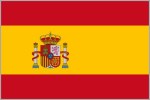
Valencia is the capital of the region Communidad Valencia which includes Castellón and Alicante to the north and south respectively. The city is home to around 750,000 inhabitants and is Spain‘s third city after Madrid and Barcelona. It is most famous for paella (invented here), the Holy Grail and Las Fallas, the week long fiesta held every March which culminates in the burning of effigies of historical and political figures, and a mighty fireworks display.
I studied at Universidad Politécnica de Valencia, on the Erasmus student exchange programme. I lived in the city in a student residence for around ten months over 2002 and 2003, and also took the opportunity to see more of Spain and even fitted in a trip to Morocco. At the time, there were no budget airlines flying to Valencia, so my trips home were mostly through Barcelona or Madrid.

The Town Hall or Ajuntament (in Valenciano) which sits in the Plaça del Ajuntament is the civic centre for the city.
Banco de Valencia is just off the Plaza del Ayuntamiento and is a rather smart looking place, part of a larger national bank chain called Bancaja. It is a good example of the 1920s and 30s architecture prevalent in central Valencia.

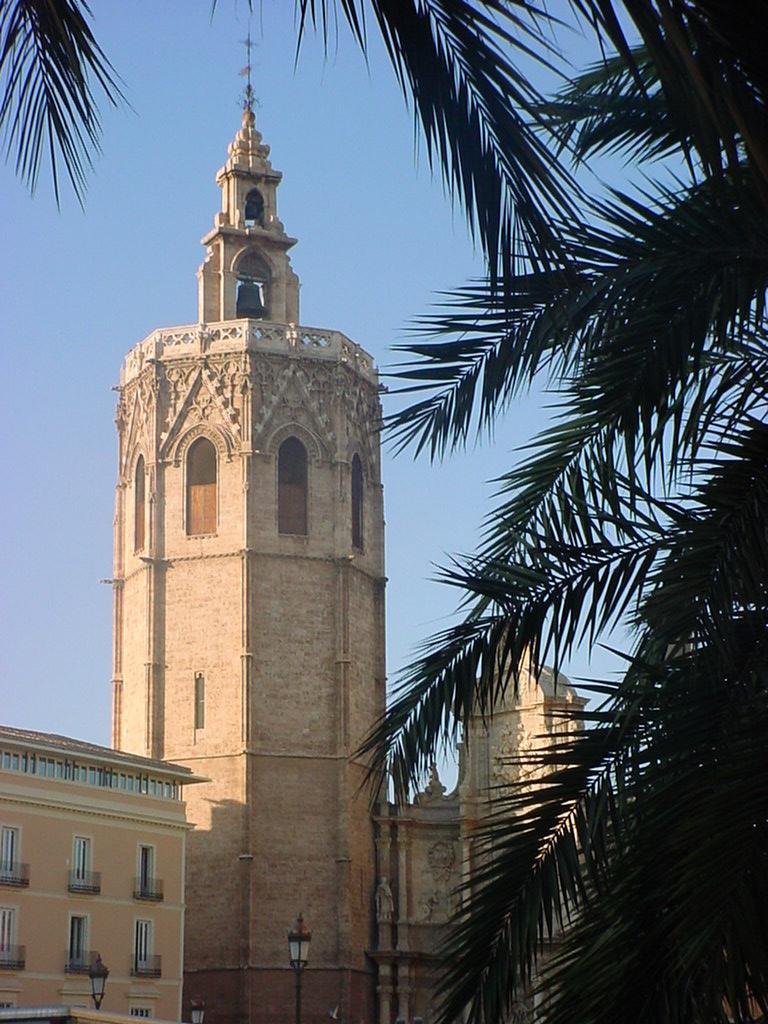
The old Cathedral of Valencia and the Miguelete, the seventy-metre tower which can be climbed, although not after a fat lunch. The views are excellent, the tower is much higher than it seems. It was built during the 14th and 15th centuries and contains bells dating back to 1350. It gave me quite a shock when the large one visible at the top rang as I stood right next to it!
The Ceramics Museum is an old converted palace in the city centre, and is quite easily one of the most obsessively designed buildings I have seen. The museum inside takes second stage.
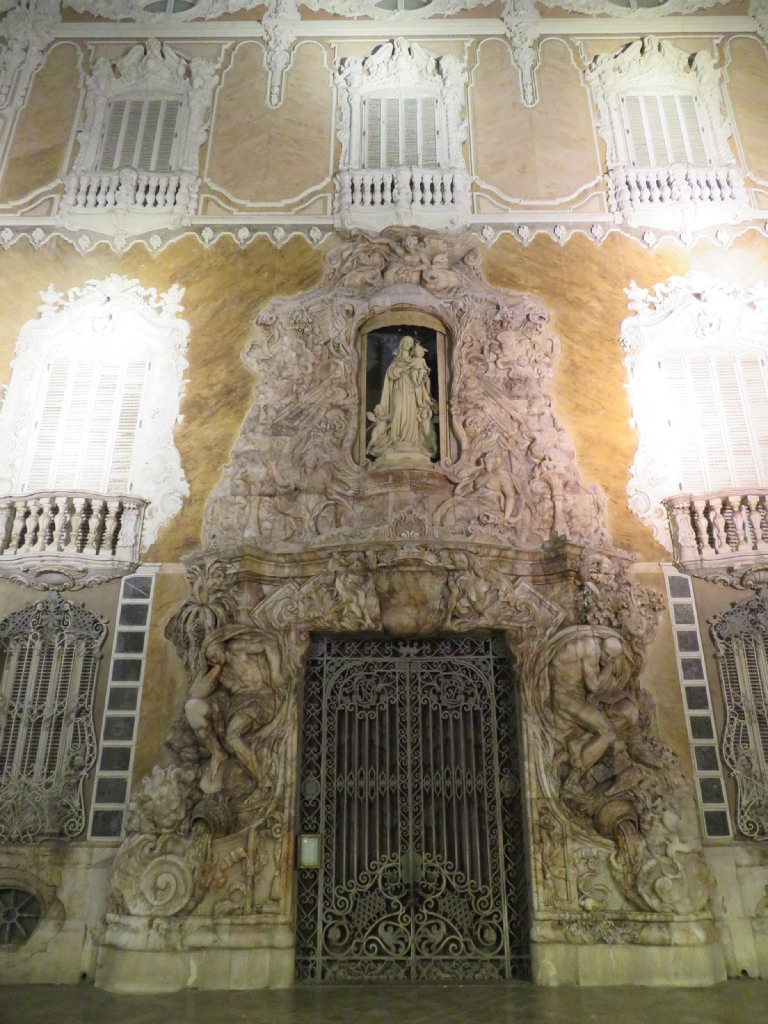
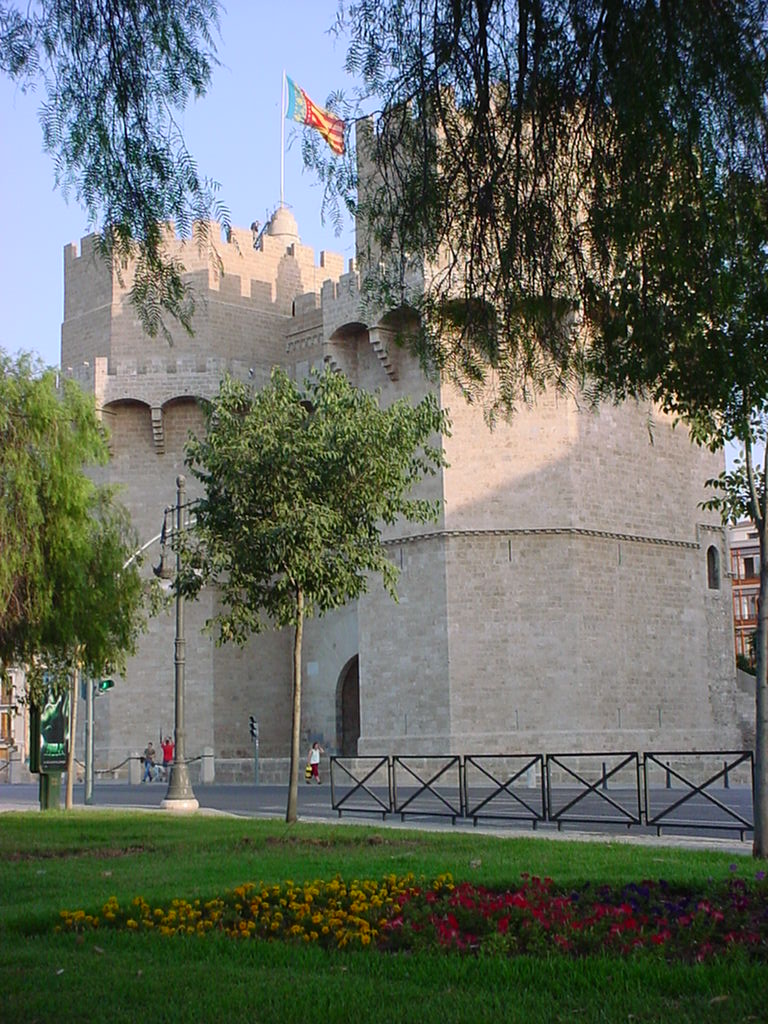
Torres de Serranos are part of the ancient city wall of Valencia, again from about six hundred years ago, and recently refurbished. Not much remains of the original walls, but a similar gate, the Torres de Quart is nearby.
Silk trading was strong in Valencia in the past, so much so that the twisty columned Silk Exchange, known as La Lonja de la Seda, was built around five hundred years ago. It is a World Heritage Site.
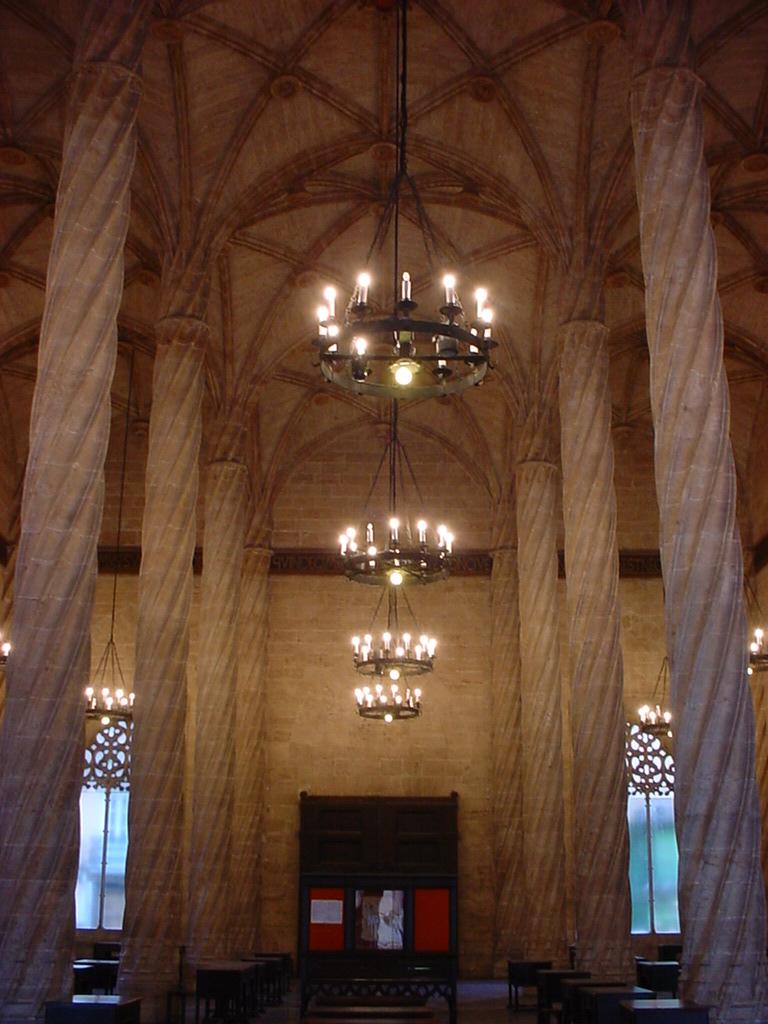

Plaza de la Virgen is in the centre of the old part of Valencia, right behind the cathedral. The fountain in the middle represents the old man of the River Turia, and his seven daughters who bring irrigation to Valencia. In the background the alabaster windows of the cathedral can be seen on the tower.
Santiago Calatrava, the world-famous architect who happens to be from Valencia, designed this bridge and metro station combined at Alameda. The station is underground and also in his distinctive style.


Calatrava’s signature works can be found towards the old mouth of the Rio Turia, in the form of the City of Arts and Sciences. L’Umbracle seen here, is a fancy outdoor sculpture park.
El Museu de las Ciencies Principe Felipe is the centrepiece of the development, a large science museum reminiscent of whalebone. I really like the shallow blue pools that the whole complex is surrounded by.
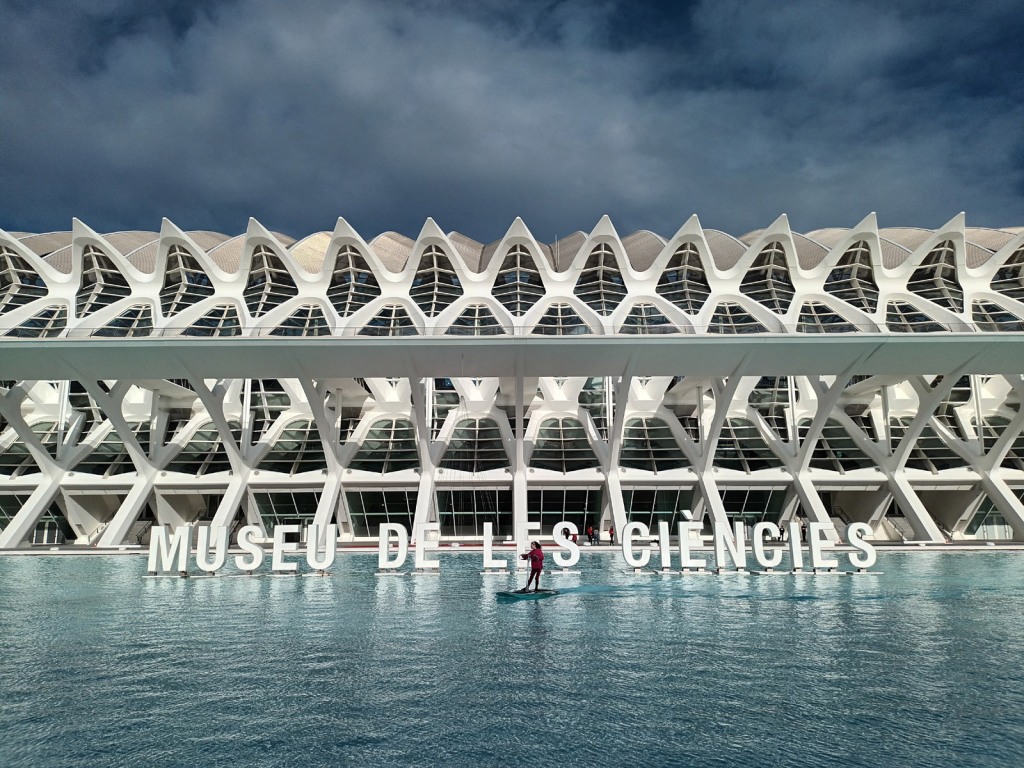

L’Hemisferic is the IMAX cinema of the complex, designed to look from the side like a human eye when half opened. End-on as in this shot you can see the tilted flaps which form the entrance way.
An overview of the Ciudad de las Artes y las Ciencias. Whilst spectacular to look at and undoubtedly an icon of 21st-century architecture, since the 2008 financial crisis the complex has been blamed for some of the local government’s economic woes.


Whilst I lived in Valencia construction was still underway on what was to become the final piece of the puzzle, El Palau de les Arts Reina Sofia. They were using ship building techniques to clad the structure, which looks stunning now it is complete.
I attended the Universitat Politecnica de Valencia which is one of the two major universities in the city. Like my alma mater Strathclyde, it specialises in technical subjects. There are around 35,000 students, and a great many services are offered in the main square seen here; a variety of cafes, shops, a barber, banks and a shop that sells house plants, should you feel the need.


Colgeio Mayor Ausias March was my home for the academic year. The term “Colegio Mayor” applies to a hall of residence, this is the main residence building. I lived in a flat in a separate building which was also owned by the Colegio.
Spain is famous, or possibly infamous, for its nightlife. We’d head out most weekends to Barrio del Carmen, to such places as Johnny Maracas. There’s no weights and measures act here, so fill ’em up!
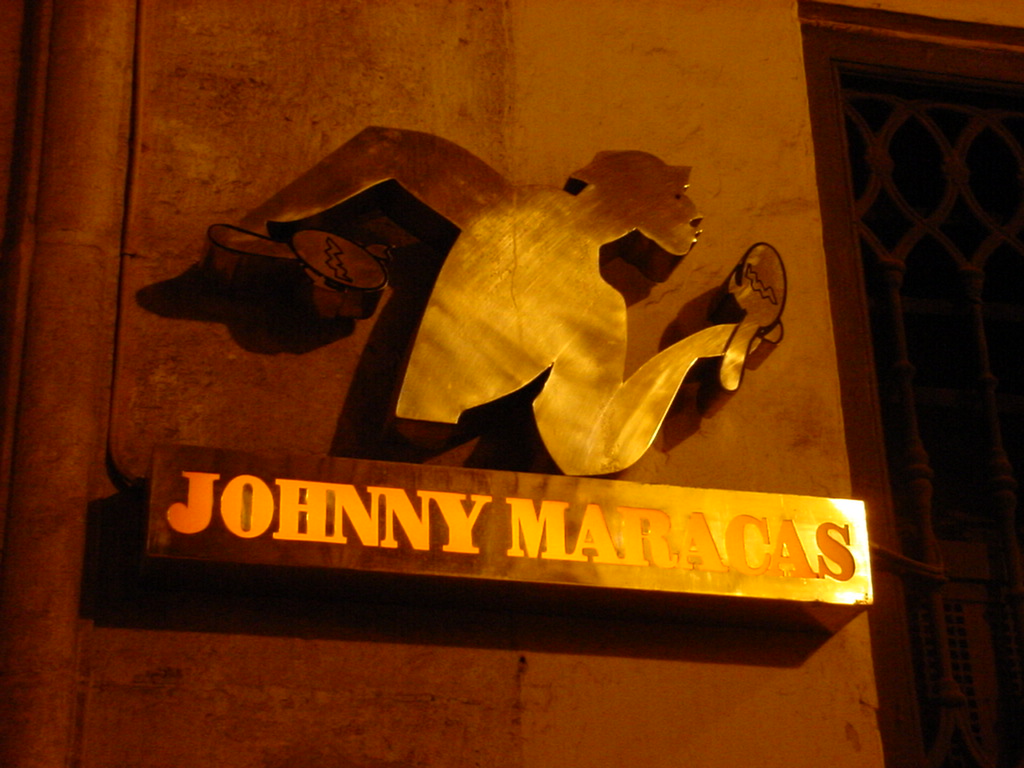

Valencia is host to one of Spain’s most famous fiestas, “Las Fallas”. Every day at 2pm for nineteen days, hundreds of firecrackers are detonated in the town square for the Mascleta. It lasts ten minutes and includes rockets and confetti, with noise levels exceeding 120 decibels. It’s the kind of noise which literally shakes the ground and makes all your hair stand on end.
Las Fallas is based around the creation of many hundreds of “ninots” or Fallas; wood, cardboard and papier mache models representing the failures and misgivings of today’s society, political figures and forms of Spanish culture. This is just a part of the 2003 winner “Mother Nature”, which was somewhat larger than a house and about as expensive.


Despite the number of hours and Euros pumped into the creation of the Fallas, there isn’t enough space to keep them so all but one are torched on the last night of the fiesta, in what is known as “La Quema”. This one took place in a small plaza, perhaps a little too small for all that sudden heat and a large crowd of people.
For seven nights during the fiesta, there is a fireworks display at the banks of the old Turia, with each night topping the last for ostentatiousness. These are easily the best and longest fireworks displays I have ever witnessed – far ahead of anything I saw during the years I lived in China or the USA.

Created 2002 | Updated 2015, 2023
